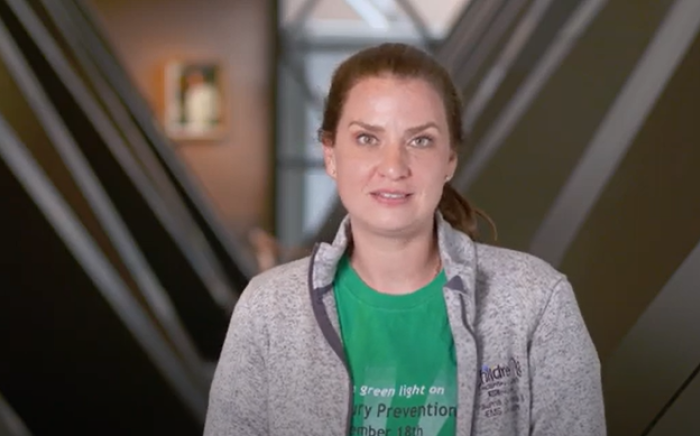abduction: to draw away from the middle of the body or limb
adduction: to draw toward the middle of the body or limb
antigravity: refers to strength required to lift part of one's body against gravity
arthrodesis: surgical immobilization of a joint so bones grow together
avulsion: separation or detachment
axon: nerve cell that conducts impulses
axonotmesis: interruption of the axons of a nerve without destruction of the nerve's supporting structure
biceps: large muscle on front of upper arm
brachial plexus: nerve network controlling movement and sensation in the arm
brachial plexus palsy: weakened or paralyzed muscles in the arm, shoulder, and hand caused by birth injury to the brachial plexus
brachioradialis: muscle that flexes forearm
connective tissue: tissue such as tendons and ligaments that support or bind other tissues
contractures: shortening of a muscle that produces deformity
coracobrachialis: upper arm muscle that bends the elbow
CT myelography: imaging of the spinal cord using computerized analysis of cross-sectional scans (tomograms) after injection of a contrast agent into the spinal fluid
deltoid: muscle that covers shoulder joint and lifts arm to the side
diaphragm: the partition of muscle and connective tissue between the chest and abdomen
dystocia: difficult childbirth
electromyography: measurement of electrical activity in muscle
extension: movement at joint that increases angle between bones on either side
flex; flexion: movement at joint that decreases angle between bones on either side
graft: surgical implant of living tissue
humeral head: top of the long bone of the upper arm where it joins shoulder
humerus: long bone of the upper arm
innervation: supply of nerve fibers
latissimus dorsi: broad muscle of the back
microsurgical nerve grafting: surgical implantation of nerve tissue using operating microscope to work on very small structures
microsurgery: surgery performed on small structures magnified by a microscope
MRI: magnetic resonance imaging; a noninvasive diagnostic technique that produces electronic images of atomic and molecular structures in internal tissues
multidisciplinary: involving several areas of medical science and practice
musculocutaneous: relating to both muscle and skin
nerve action potential: change in electric potential of a nerve when it is stimulated
nerve grafting: surgical implantation of nerve tissue
nerve receptor: specialized cell or nerve endings that respond to sensory stimuli
neurology: the scientific study of the nervous system
neurolysis: destruction of nerve tissue, or freeing of nerve from inflammatory adhesions
neuroma: excessive scar tissue in a damaged nerve
neurophysiology: the scientific study of the functioning of the nervous system
neuropraxia: condition in which conduction is blocked at a point in the nerve but is
present above and below that point
neurosurgery: surgery involves nerves, spinal cord, and brain
neurotization: surgical connection of two nerves
neurotmesis: complete division of a nerve
nonneural: not relating to nerve tissue
occupational therapy: activities prescribed to promote recovery and rehabilitation
orthopedics: branch of medicine concerned with correction of skeletal deformities
palsy: muscular weakness or paralysis
pathogenesis: the origin of a disease
pectoralis major: major muscle of the chest
peripheral nerves: cranial nerves, spinal nerves, and autonomic nervous system (i.e., nerves outside the central nervous system)
phrenic: relating to the diaphragm
physical therapy: treatment by physical and mechanical means, e. g., exercises
plication: fold, process of folding, or state of being folded
pneumothorax: air in the chest cavity from injury to the lung
prevalence: percentage of a population with a certain disease at a given time
proprioceptive: relating to perception of movement and other sensations within one's own body
radial: relating to the radius, or forearm bone on the side of the thumb
radius: forearm bone on the side of the thumb
rupture: break or tear in tissue
subclavian: below the clavicle
subscapularis: muscle in the shoulder area that rotates arm
supination: rotation of forearm and hand so that palm faces forward or upward, and corresponding rotation of lower leg and foot
sural: relating to calf of leg
trapezius: muscle of upper back
triceps: muscle along back of upper arm
ulnar: relating to the ulna, or forearm bone on the side of the little finger












